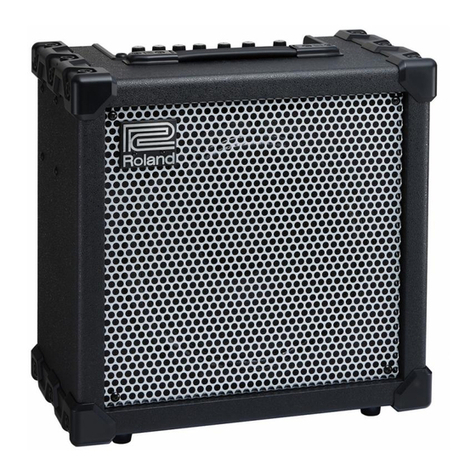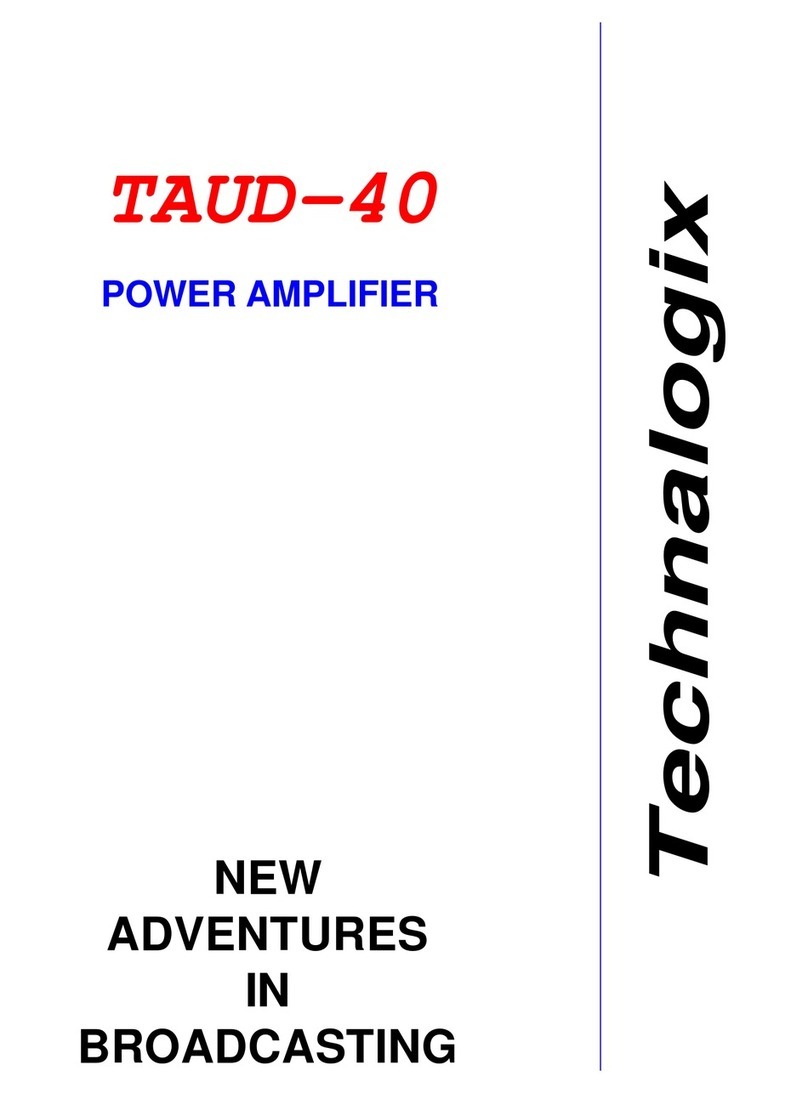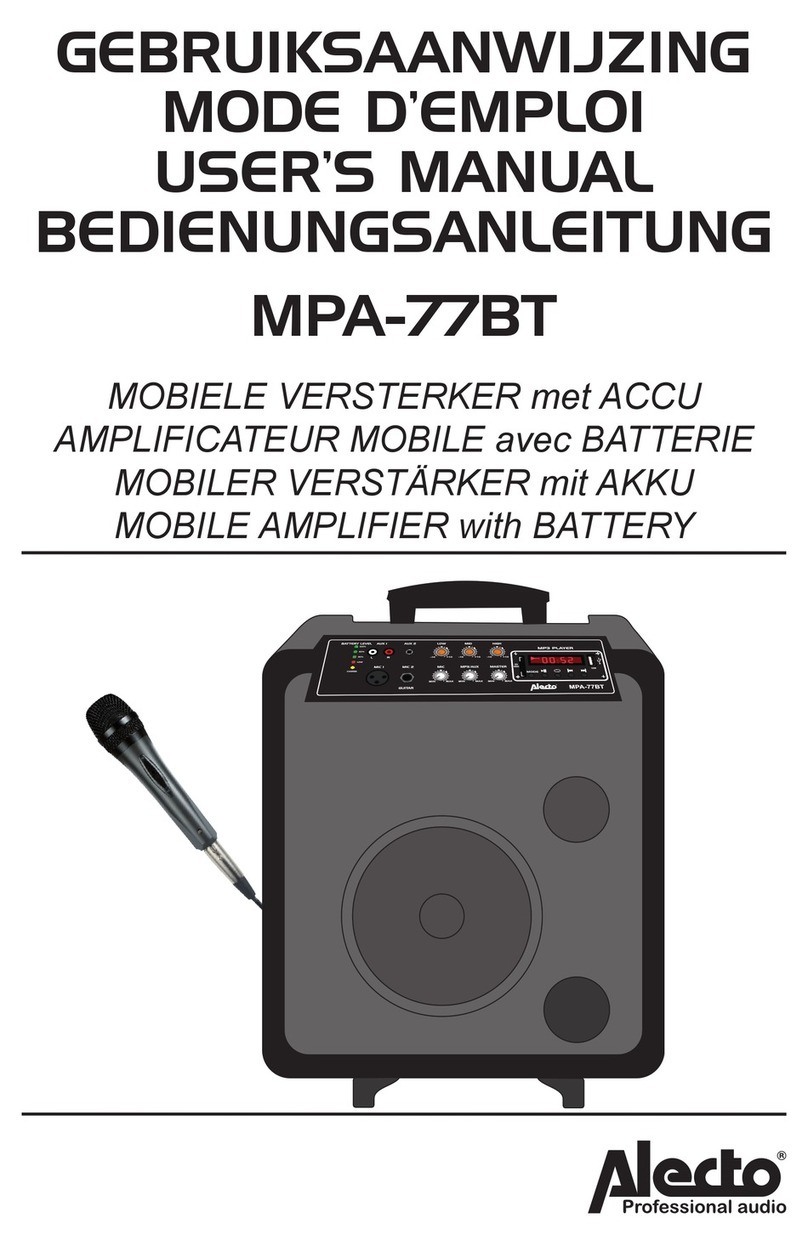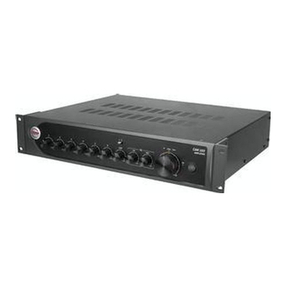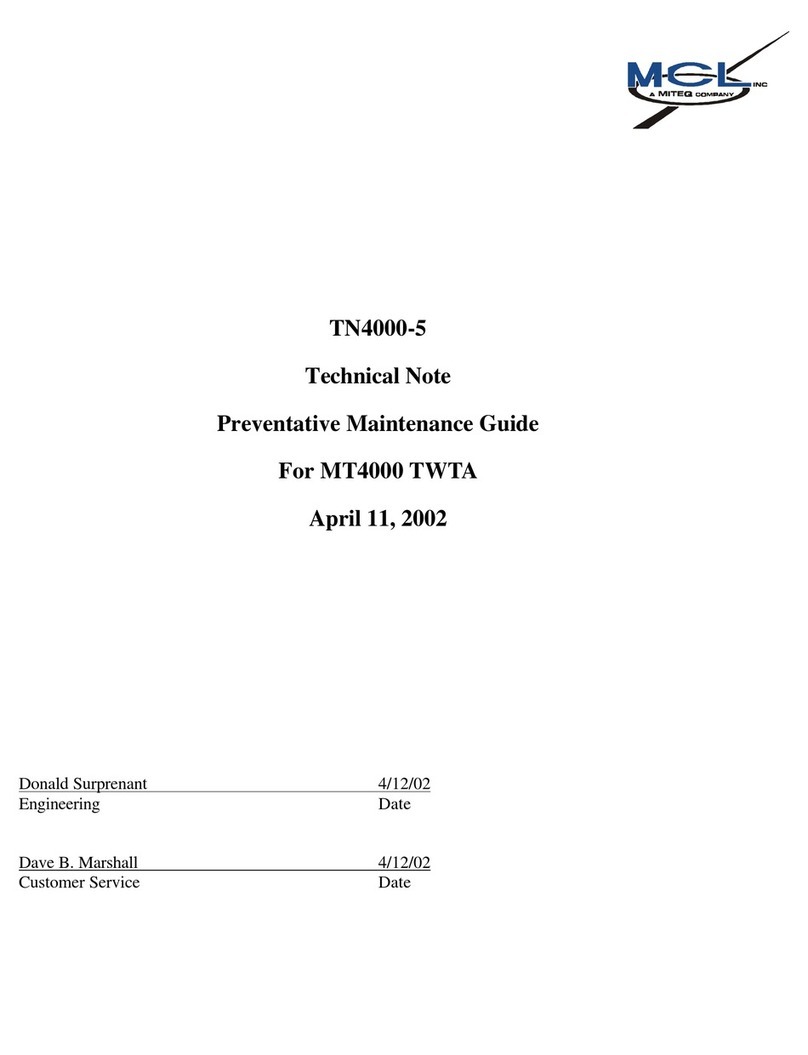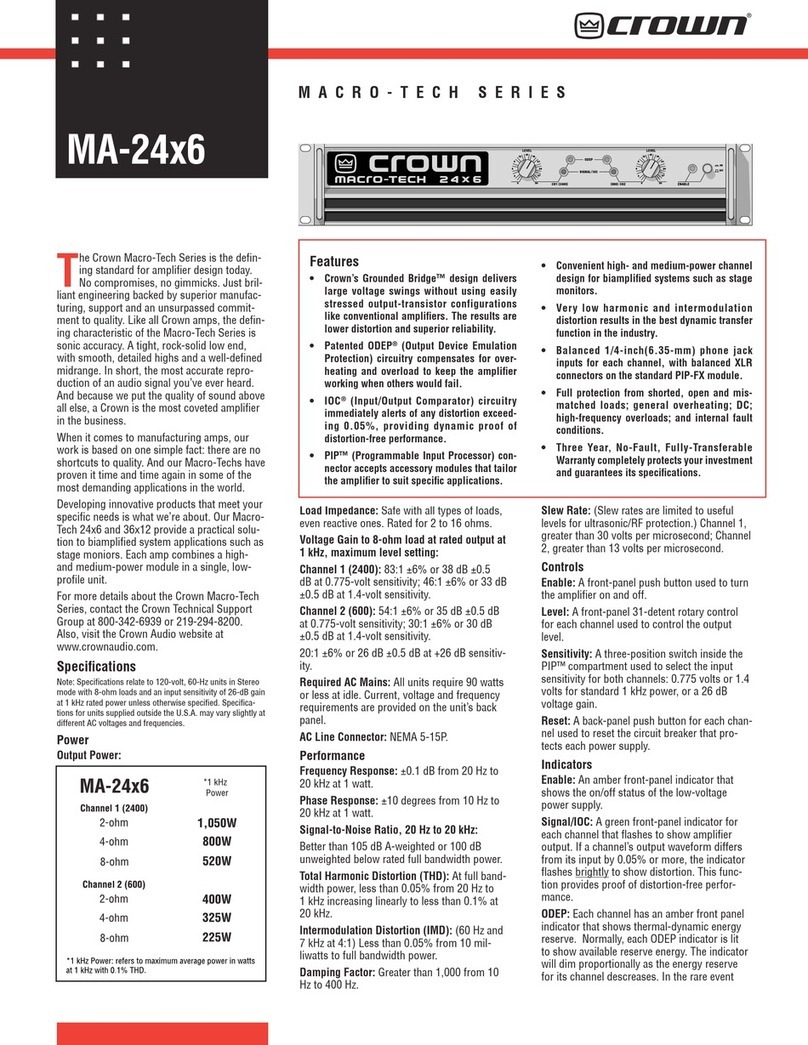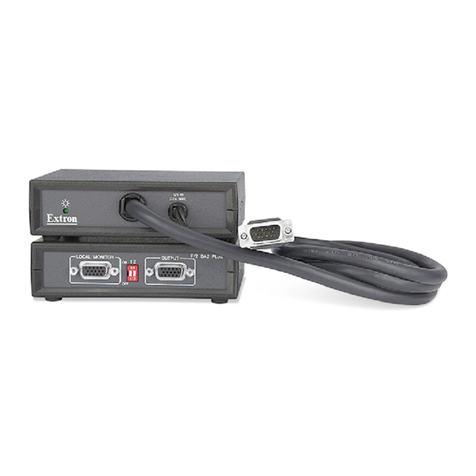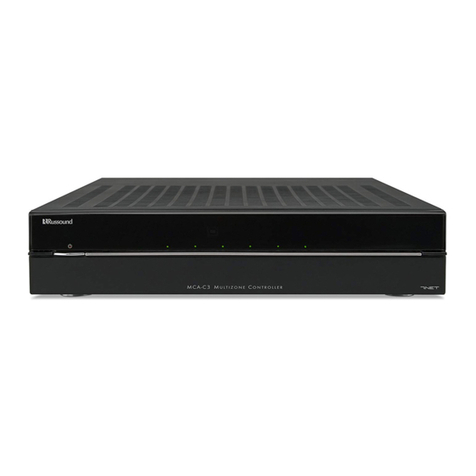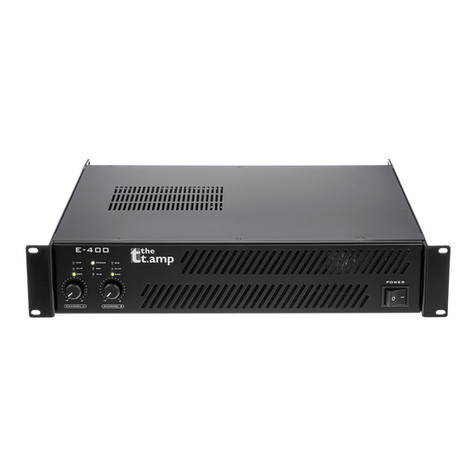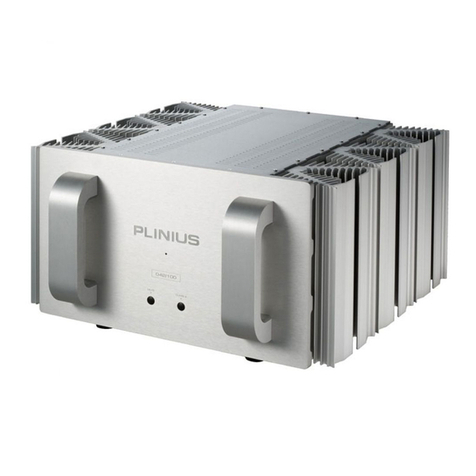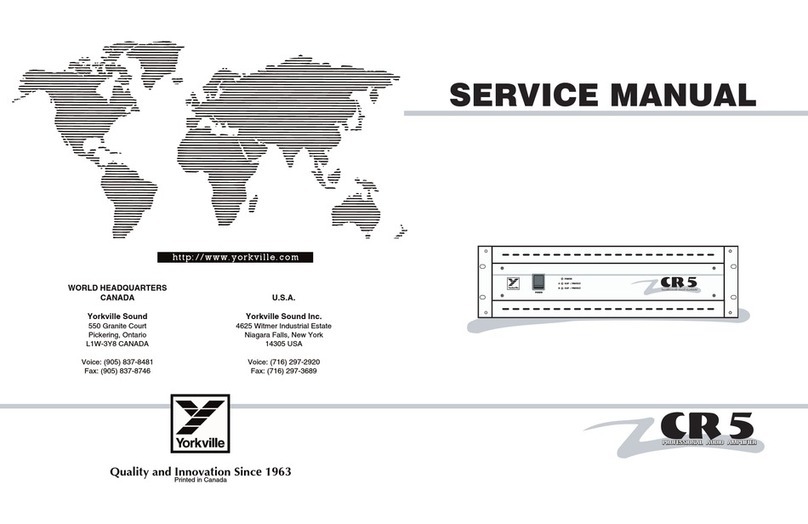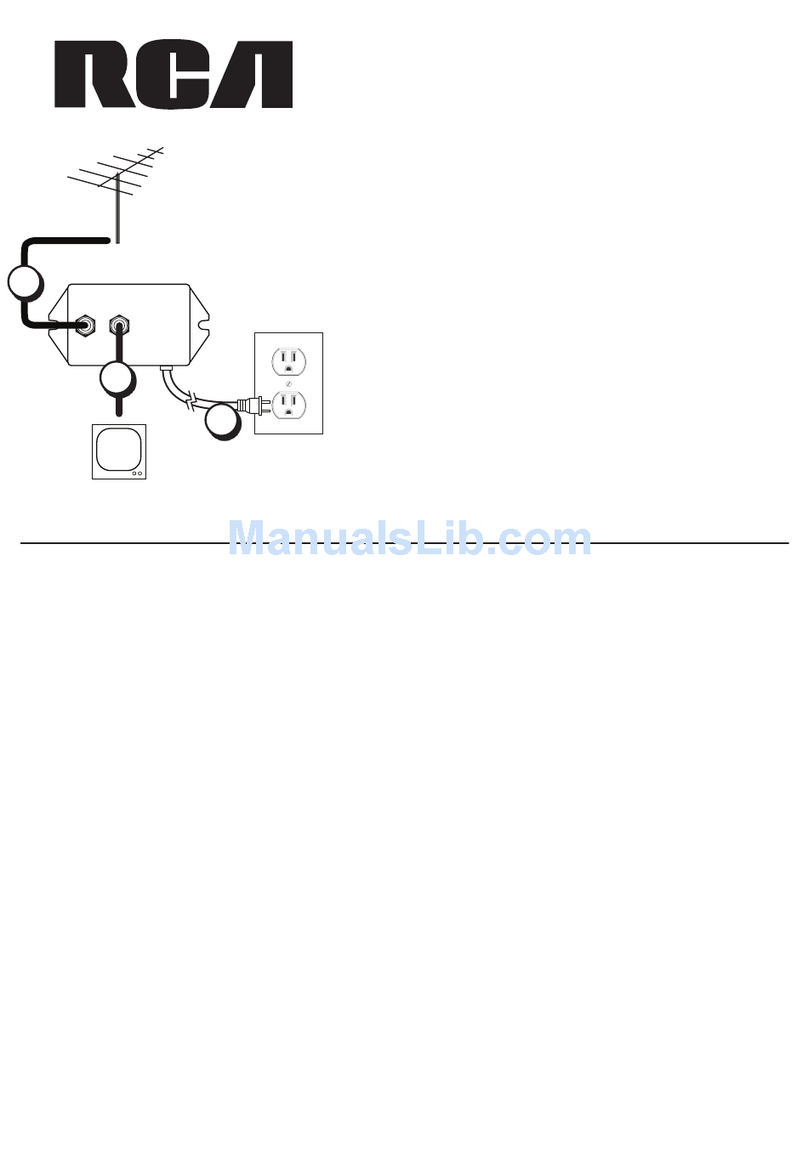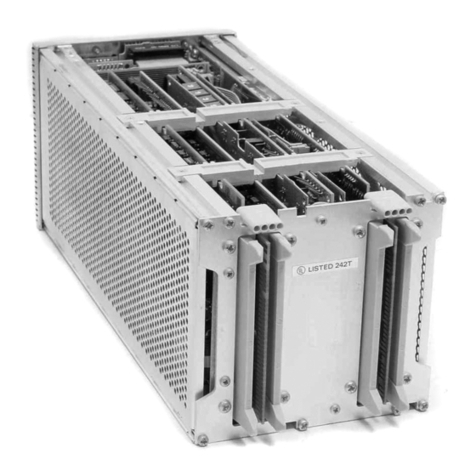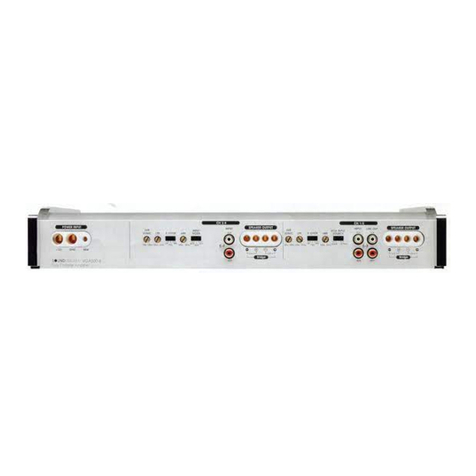Vislink DPA3 User manual

Vislink International Ltd
Waterside House, Earls Colne Business Park, Colchester, Essex, CO6 2NS, UK.
Telephone: +44 (0)1787 223300 ● Email: sales@vislink.com ● Website: www.vislink.com
Company Registered in England No. 2074604 VAT registration No. GB 423 7391 54
Registered office: Marlborough House, Charnham Lane, Hungerford, Berkshire, RG17 0EY
DPA3 Digital Power Amplifier
OPERATORS MANUAL

Digital Power Amplifier Operator Manual
Doc : DPA3-ASUM-7xxx
Contents
Issue : 1 (03/08/2015) i
Copyright © 2015 Vislink International Ltd
Contents
1. General Information............................................................................................. 1
1.1. Health & Safety ........................................................................................... 1
1.2. Environmental Operating Conditions ........................................................... 1
1.2.1. Exposure to Non Ionising (RF) Radiation/Safe Working Distances ........ 1
1.3. Maximum RF Power Density Limits ............................................................. 2
1.4. Issue Status ................................................................................................ 3
2. Introduction ......................................................................................................... 4
3. Specifications ...................................................................................................... 5
4. Monitoring and Control Functions ........................................................................ 6
4.1. Front Panel Layout ...................................................................................... 6
5. Connectors and Pin Outs .................................................................................... 7
5.1. Multiway MIL-C Connector .......................................................................... 7
5.2. RF Input ...................................................................................................... 7
5.3. RF Output ................................................................................................... 7
5.4. Fan Power ................................................................................................... 7
6. Installation Requirements .................................................................................... 8
6.1. Handling Precautions .................................................................................. 8
6.2. Installation ................................................................................................... 8

Digital Power Amplifier Operator Manual
Doc : DPA3-ASUM-7xxx
Document Disclaimer
Issue : 1 (03/08/2015) i
Copyright © 2015 Vislink International Ltd
Document Disclaimer
The information contained in this manual remains the property of Gigawave and may
not be used, disclosed or reproduced in any other form whatsoever without the prior
written permission of Gigawave.
Gigawave reserves the right to alter the equipment and specification appertaining to
the equipment described in this manual without notification.

Digital Power Amplifier Operator Manual
Doc : DPA3-ASUM-7xxx
General Information
Issue : 1 (03/08/2015) Page 1
Copyright © 2015 Vislink International Ltd
1. General Information
1.1. Health & Safety
The information that follows, together with local site regulations, must be
studied by personnel concerned with the operation or maintenance of the
equipment, to ensure awareness of potential hazards.
WARNING – RF Power Hazard: High levels of RF power are present in the unit.
Exposure to RF or microwave power can cause burns and may be harmful to health.
WARNING – GaAs/BeO Hazard: Certain components inside the equipment contain
Gallium Arsenide and Beryllium Oxide which are toxic substances. Whilst safe to
handle under normal circumstances, individual components must not be cut, broken
apart, incinerated or chemically processed. In the case of Beryllium Oxide, a white
ceramic material, the principal hazard is from the dust or fumes which are carcinogenic
if ingested, inhaled or entering damaged skin.
Please consult your local authority before disposing of these components.
CAUTION – Tantalum Capacitors: When subjected to reverse or excess forward
voltage, ripple current or temperature these components may rupture and could
potentially cause personal injury.
CAUTION: This system contains MOS devices. Electro-Static Discharge (ESD)
precautions should be employed to prevent accidental damage.
1.2. Environmental Operating Conditions
1.2.1. EXPOSURE TO NON IONISING (RF) RADIATION/SAFE WORKING
DISTANCES
The safe working distance from a transmitting antenna may be calculated from the
relationship:
D =
In which: D = safe working distance (metres)
PT = transmitter or combiner power output (Watts)
GR = antenna gain ratio = anti log (gain dBi 10)
w = power density (Watts/square metre)
The RF power density value is determined by reference to safety guidelines for
exposure of the human body to non-ionising radiation. It is important to note that the
guidelines adopted differ throughout the world and are from time-to-time re-issued with
revised guidelines. For Gigawave use, a maximum power density limit of 1W/m² is to
be applied when calculating minimum safe working distances.
Important Note: It must be remembered that any transmitting equipment radiating
power at frequencies of 100kHz and higher, has the potential to produce thermal and
athermal effects upon the human body.
PT. GR
4 W

Digital Power Amplifier Operator Manual
Doc : DPA3-ASUM-7xxx
General Information
Issue : 1 (03/08/2015) Page 2
Copyright © 2015 Vislink International Ltd
To be safe:
a) Operators should not stand or walk in front of any antenna, nor should they
allow anyone else to do so.
b) Operators should not operate any RF transmitter or power amplifier with any of
its covers removed, nor should they allow anyone else to do so.
Worked examples
Antenna Transmitter Power
Type Gain (dBi) Gain Ratio 2W 4W 10W 30W
OMNI 4 2.5 1 1 1.5 2.5
HELIX 20 100 4 5.6 9 15.5
PARABOLIC DISH 35 3,162 22.5 32 50 87
MINIMUM SAFE DISTANCE (METRES)
1.3. Maximum RF Power Density Limits
The RF Radiation Power Density limit figure recommended by Gigawave is based
upon guideline levels published in:
a) IEEE standard C95.1 1999 - IEEE Standard for Safety Levels with respect to
Human Exposure to Radio Frequency Electromagnetic Fields, 3kHz to
300GHz.
b) Guidelines for Limiting Exposure to Time-varying Electric, Magnetic &
Electromagnetic Fields (up to 300GHz) published in 1998 by the Secretariat of
the International Commission on Non-Ionising Radiation Protection (ICNIRP).
Both documents define guideline RF power density limits for "Controlled" and
"Uncontrolled" environments. An uncontrolled environment is defined as one in which
the person subjected to the RF radiation may be unaware of and has no control over
the radiation energy received. The uncontrolled environment conditions can arise,
even in the best regulated operations and for this reason the limits defined for the
uncontrolled environment have been assumed for the Gigawave recommended limit.
Documents a) and b) also show the RF power density guidelines to be frequency
dependent. Different power density / frequency characteristics are presented in the
two documents. To avoid complexity and to avoid areas of uncertainty, Gigawave
recommends the use of a single power density limit across the frequency range
100kHz to 300GHz. The 1W/m² power density limit we recommend satisfies the most
stringent of the guidelines published to date.
NB: The IICNIRP document may be freely downloaded from the internet at
www.icnirp.de/emfgdl (PDF file), the IEEE standard is available on loan from Essex
County Library on payment of a search fee.

Digital Power Amplifier Operator Manual
Doc : DPA3-ASUM-7xxx
General Information
Issue : 1 (03/08/2015) Page 3
Copyright © 2015 Vislink International Ltd
1.4. Issue Status
Version Date Modification Updated by
1 03/08/2015 Initial version A.Jackson

Digital Power Amplifier Operator Manual
Doc : DPA3-ASUM-7xxx
Introduction
Issue : 1 (03/08/2015) Page 4
Copyright © 2015 Vislink International Ltd
2. Introduction
The Digital Power Amplifier (DPA3) is designed as an add-on to Gigawave digital
transmitters and is used to provide increased output power. Typical applications
include mobile transmitters such as helicopter downlinks.
The DHPA operates over the frequencies between 1.3 to 7GHz in bands with a factory
set bandwidth of typically 400MHz and a nominal output power of up to 20W. The
amplifiers feature excellent linearity as required for COFDM digital modulation.
The unit may be powered from +20VDC to +30VDC.

Digital Power Amplifier Operator Manual
Doc : DPA3-ASUM-7xxx
Specifications
Issue : 1 (03/08/2015) Page 5
Copyright © 2015 Vislink International Ltd
3. Specifications
Feature Details
Frequency Band 1.3 to 7.0GHz
Output Power Up to 20W
Linear Pre-distortion
Correction
Automatically enabled
Reverse Power Protected by circulator
Impedance 50Ω in/out
Spurious Better than -60dBc
Gain Flatness +/-1dB over frequency range
Gain vs. Temperature +/-1dB over temperature range
Third Order Intercept +62dBm
Input VSWR 1.4.1
RF Input Connector N Type
RF Output Connector N Type
Power Connector MIL-C Specification
Monitoring LEDs DC present
RF present
Load fault
Over temperature
Power Requirement +20 to +30VDC at 150W (typical)
Weight 2.6Kg
Environmental Safe use: -20° to +50°C
To spec: -10° to +45°C
Altitude: 3500m
Humidity: 95% long term
Specifications may alter at the discretion of Gigawave or to meet customer specific
requirements.

Digital Power Amplifier Operator Manual
Doc : DPA3-ASUM-7xxx
Monitoring and Control Functions
Issue : 1 (03/08/2015) Page 6
Copyright © 2015 Vislink International Ltd
4. Monitoring and Control Functions
The unit provides optional monitoring of output RF power in the form of open collector
logic – see section 5.1 below.
The unit has no control functions other than on/off through the application of DC power
via the MIL spec connector.
4.1. Front Panel Layout
Item Description Notes
VSWR LED Indicates fault on RF output Check load is 50Ω
RF LED Output RF present
DC LED DC input power present
TEMP LED PA temperature exceeds 60°C Check fan operation
CIRCUIT
BREAKER
DC input over-current trip Press to reset

Digital Power Amplifier Operator Manual
Doc : DPA3-ASUM-7xxx
Connectors and Pin Outs
Issue : 1 (03/08/2015) Page 7
Copyright © 2015 Vislink International Ltd
5. Connectors and Pin Outs
5.1. Multiway MIL-C Connector
Connector type: Amphenol 62GB-16F14-12SN
This connector supplies the DC input power to the unit and the monitoring function
outputs.
Pin Description
A NC
B Forward power alarm (open collector)
C NC +20 – 30Vdc (ADL & MET Option Only)
D NC +20 – 30Vdc (ADL & MET Option Only)
E NC +20 – 30Vdc (ADL & MET Option Only)
F NC +20 – 30Vdc (ADL & MET Option Only)
G Forward power alarm (open collector)
H NC
J +20 – 30Vdc – STD OPTION
K 0 V
L 0 V
M +20 – 30Vdc – STD OPTION
5.2. RF Input
Connector type: N type 50Ω
5.3. RF Output
Connector type: N type 50Ω
5.4. Fan Power
The fan is powered internally and is always on when power is connected to the unit.

Digital Power Amplifier Operator Manual
Doc : DPA3-ASUM-7xxx
Installation Requirements
Issue : 1 (03/08/2015) Page 8
Copyright © 2015 Vislink International Ltd
6. Installation Requirements
6.1. Handling Precautions
Switch off supplies before removing covers or disconnecting any RF cables,
and before inspecting damaged cables or antennas.
Avoid standing in front antennas when these are fed by high power amplifiers
and never look into the open end of a waveguide or cable where RF power may
be present.
Users are strongly recommended to return any equipment that requires RF
servicing to Gigawave.
Wipe off any water or fluids immediately.
Do not open or modify the assembly.
During the insertion or removal of interface connectors ensure that the
connectors are free from debris and be sure not to damage the contact pins.
6.2. Installation
Refer to section 6.1 above regarding handling precautions.
Secure the unit using the mounting holes in the interface plate at the base of
the unit.
Orientation of the unit is non-specific for operation.
The unit is fitted with a cooling fan integrated into the heat-sink. Allow free air
circulation around the unit which is adequate for fan assisted the heat
dissipation of the unit (power consumption mentioned in Specifications, section
3 above).
Other manuals for DPA3
1
Table of contents
Other Vislink Amplifier manuals


